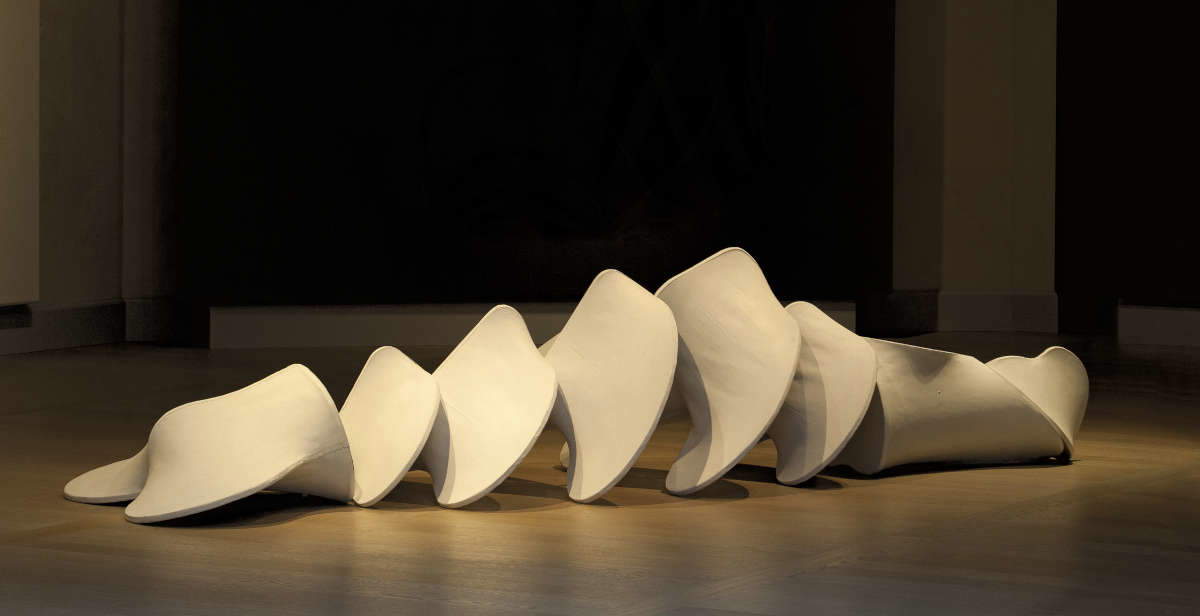The whale, a gigantic and mysterious creature that has inhabited man’s imagination for centuries, returns to star in Genoa in a major exhibition that spans the centuries and the arts. From October 12, 2025 to February 15, 2026, Palazzo Ducale hosts Moby Dick - The Whale. History of a Myth from Antiquity to Contemporary Art, a group exhibition curated by Ilaria Bonacossa and Marina Avia Estrada, with Michela Murialdo, produced in collaboration with TBA21-Ocean Space, the Thyssen-Bornemisza Art Contemporary Foundation. The exhibition is part of the Genoa and the Nineteenth Century program, promoted by the City of Genoa to enhance the city’s artistic and cultural heritage in dialogue with the major themes of the century.
The exhibition officially opens to the public on Sunday, Oct. 12, in the spaces of the Doge’s Apartment and Chapel, historic settings that host an itinerary dedicated to the representation and significance of the whale in Western culture. Since antiquity, the figure of the whale has fueled legends, myths and conflicting interpretations. Considered from time to time a sea monster capable of swallowing entire ships or a benevolent creature, queen of the oceans and symbol of immensity, the whale has embodied the very idea of natural mystery. Mythological narratives, medieval bestiaries and seafaring literature have helped fix in the collective memory an ambivalent and powerful image that continues to provoke reflections on man, nature and the infinite.


Of the many representations that have arisen over the centuries, none has had the symbolic force of the novel Moby-Dick; or, The Whale, published by Herman Melville in 1851. Captain Ahab’s obsessive pursuit of the white whale has become one of the most universal metaphors in modern literature: the confrontation between man and nature, between the will to dominate and the elusive mystery of existence.
Starting from this literary archetype, the Genoese exhibition aims to explore the history of the whale myth in its multiple interpretations, from the Middle Ages to contemporary times. The itinerary brings together works from museums, public and private collections, installations, sculptures, paintings, engravings and photographs that dialogue with each other to restore the complexity of an ancient but always topical symbol.
The layout guides the visitor through a narrative progression that interweaves art, science, literature and marine imagery. The exhibition opens with evidence from medieval and Renaissance art, where the whale appears as a creature linked to the myth of Jonah and the idea of spiritual rebirth. It continues with works from the modern and contemporary ages that address the theme of whaling, geographical discovery, and the industrial transformation of the ocean.
Video installations, large-scale sculptures, ship models, historical harpoons, canvases and archival materials testify to the bond between man and the sea, evoking the conflict between domination and contemplation, conquest and respect. Throughout the exhibition, representations of the whale as a symbol of evil and as an image of natural power alternate, culminating in more recent interpretations related to ecological sensitivity and protection of the marine environment.


The curators’ intent is to offer an experience in which the visitor can perceive the continuity of a myth that crosses eras, cultures and different languages. Moby Dick - The Whale thus becomes a reflection on the tension between man and nature, on the idea of travel and discovery, but also on the fragility of ecological relationships and human responsibility toward the planet.
Artists from different generations and backgrounds are involved in the exhibition project, testifying to the vitality of the theme in contemporary culture. The works address issues ranging from the relationship between technology and the environment to the dialogue between scientific knowledge and imagination, restoring the whale as a symbolic figure of the complexity of our time.
Alongside the exhibition, the project includes the creation of an original podcast produced by Chora Media, consisting of four episodes of about twenty minutes each. The episodes, with the narrative voice of Genoese journalist and writer Simone Pieranni, will be dedicated to four main aspects of the relationship between man and whales: beauty, conflict, myth, and research. Each episode will feature artists, musicians, theater directors, actors and writers involved in the project, who will offer personal readings and reflections on the works and themes addressed.
The podcast will accompany the exhibition throughout its duration and will be available on the main digital platforms, constituting a narrative and aural extension of the exhibition itinerary. The goal is to bring the broader public closer to the exhibition through the contemporary language of audio.
 |
| Genoa dedicates an exhibition to the whale and Moby Dick: journey through myth, art and nature |
Warning: the translation into English of the original Italian article was created using automatic tools. We undertake to review all articles, but we do not guarantee the total absence of inaccuracies in the translation due to the program. You can find the original by clicking on the ITA button. If you find any mistake,please contact us.